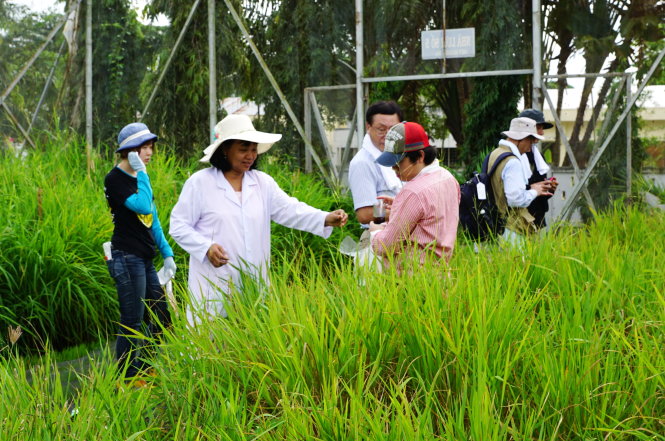Increasing demand from consumers and farmers for so called ‘Ghost rice’ has inspired scientists to cross-breed multiple species with the highly nutritious breed.
>> ‘Ghost rice’ in Vietnam – P1: Searching for the ancestry of present grains>> ‘Ghost rice’ in Vietnam – P2: Harvesting in darkness>> ‘Ghost rice’ in Vietnam – P3: Descendants of the Vietnamese grain
Scientists have received orders from large global markets to create multiple nutritious rice strains fathered by ‘ghost rice.’
It is a tough mission both in terms of science and reality. Currently there are around 20 scientists specializing in ‘ghost rice,’ mainly from Japan, China, and Vietnam.
When the biological ‘secrets’ of ghost rice remained ‘uncoded,’ the number of researchers decreased due to age. In addition, they were also busy preserving the source of the ‘ghost rice’ gene that was decreasing in the wild.
The rice species of the future are the ones that will inherit the ability to survive and resist disease with ‘ghost rice’ as ‘father’ combined with the fragrance and nutrition from other species as ‘mother.’
However no one has ever cross-bred to meet the demand.
“American people prefer rice with grains of average size and high nutrition,” said Doctor Nguyen Thi Lang from the Mekong Delta Rice Institute in Vietnam.
“People in the Middle East favor fragrant rice with a long grain.
“The responsibility of scientists is to cross-breed different species of rice to meet different demands of consumers.
“If we can meet their demand, they will import our grains at a higher price.”
The U.S. has ordered scientists to cross-breed their local ‘ghost rice’ as ‘father’ with other rice species as ‘mother’ to create very highly nutritious rice for the production of supplementary medicine.
As people become more affluent, they need to not only feel full but also nutritious, Dr. Lang commented.
“We began studying at the request of the U.S. but have not found one breed to meet the standards demanded by the U.S. market,” Dr. Lang explained.
“They require rice that contains a low amount of phytic acid.
“A high amount of phytic acid will decompose protein in food. This means that the nutritional value of the rice is not well absorbed.
“It is easy to understand why they ask for rice with a low content of phytic acid.”
She said she and her staff have cross-bred hundreds of combinations but none of them meet this requirement.
Besides cross-breeding new rice varieties, scientists are concerned with preserving ‘ghost rice’ in nature.
Doctor Duong Van Ni, an expert in biodiversity from Can Tho University, said multiple countries have started collecting samples of rice, corn, beans and other cereals from around the world since the 1960s to preserve the gene pool for cross-breeding later.
But storing in laboratories over a long period of time causes degradation. The best way of preservation is to keep species in their local environment, Dr. Ni said.
Like us on Facebook or follow us on Twitter to get the latest news about Vietnam!





















































